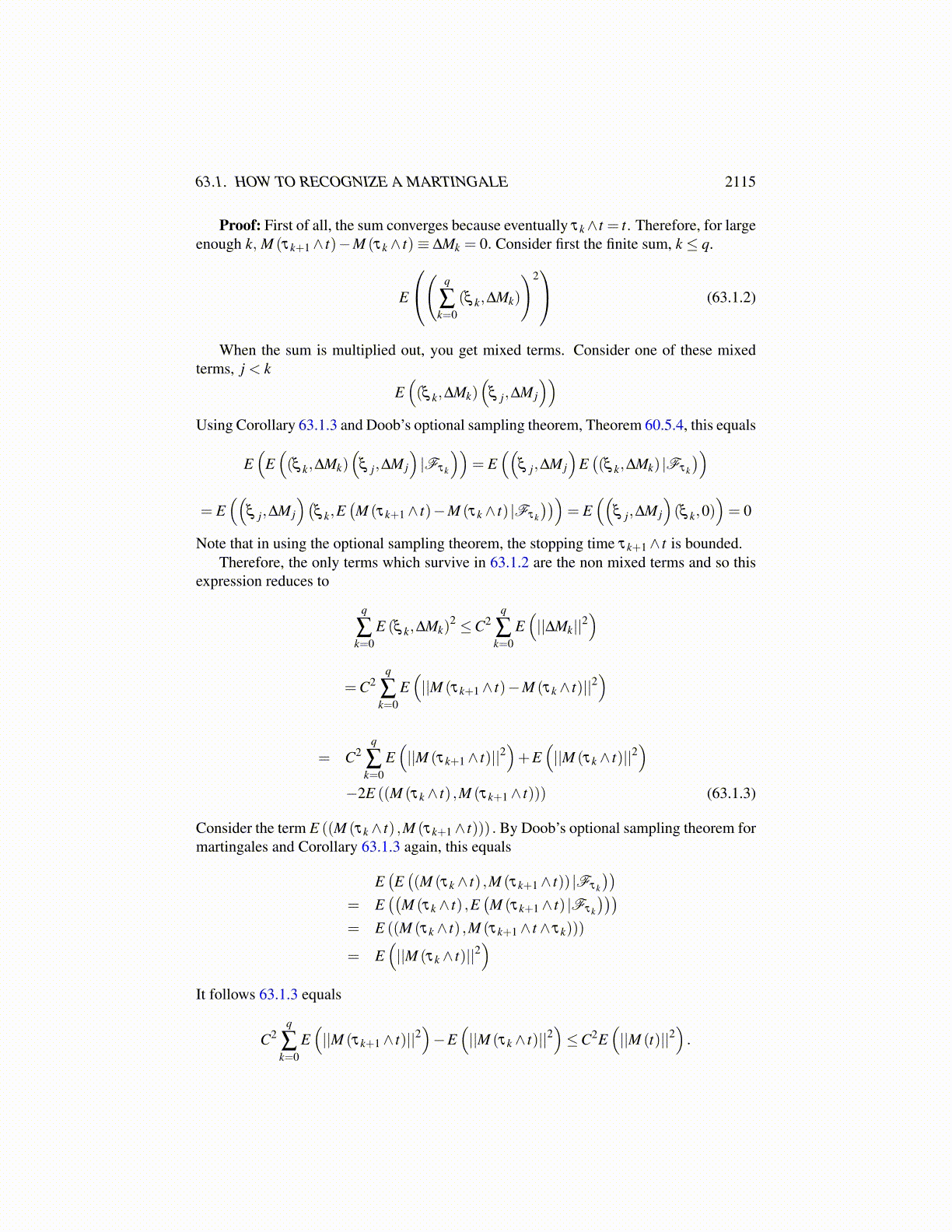
Chapter 63
The Quadratic Variation Of A Martin-gale63.1 How To Recognize A Martingale
The main ideas are most easily understood in the special case where it is assumed themartingale is bounded. Then one can extend to more general situations using a localizingsequence of stopping times.
Let {M (t)} be a continuous martingale having values in a separable Hilbert space. Theidea is to consider the submartingale,
{||M (t)||2
}and write it as the sum of a martingale
and a submartingale. An important part of the argument is the following lemma whichgives a checkable criterion for a stochastic process to be a martingale.
Lemma 63.1.1 Let {X (t)} be a stochastic process adapted to the filtration {Ft} for t ≥ 0.Then it is a martingale for the given filtration if for every stopping time σ it follows
E (X (t)) = E (X (σ)) .
In fact, it suffices to check this on stopping times which have two values.
Proof: Let s < t and A ∈Fs. Define a stopping time
σ (ω)≡ sXA (ω)+ tXAC (ω)
This is a stopping time because [σ ≤ l] = Ω if l ≥ t. Also [σ ≤ l] = A ∈Fs if l ∈ [s, t) and[σ ≤ l] = /0 if l < s. Then by assumption,∫
AX (t)dP+
∫AC
X (t)dP =
by assumption︷ ︸︸ ︷∫X (t)dP =
∫X (σ)dP =
∫A
X (s)dP+∫
ACX (t)dP
Therefore, ∫A
X (t)dP =∫
AX (s)dP
and since X (s) is Fs measurable, it follows E (X (t) |Fs) = X (s) a.e. and this shows{X (t)} is a martingale.
Note that if t ∈ [0,T ] , it suffices to check the expectation condition for stopping timeswhich have two values no larger than T .
The following lemma will be useful.
Lemma 63.1.2 Suppose Xn→ X in L1 (Ω,F ,P;E) where E is a separable Banach space.Then letting G be a σ algebra contained in F ,
E (Xn|G )→ E (X |G )
in L1 (Ω) .
2115